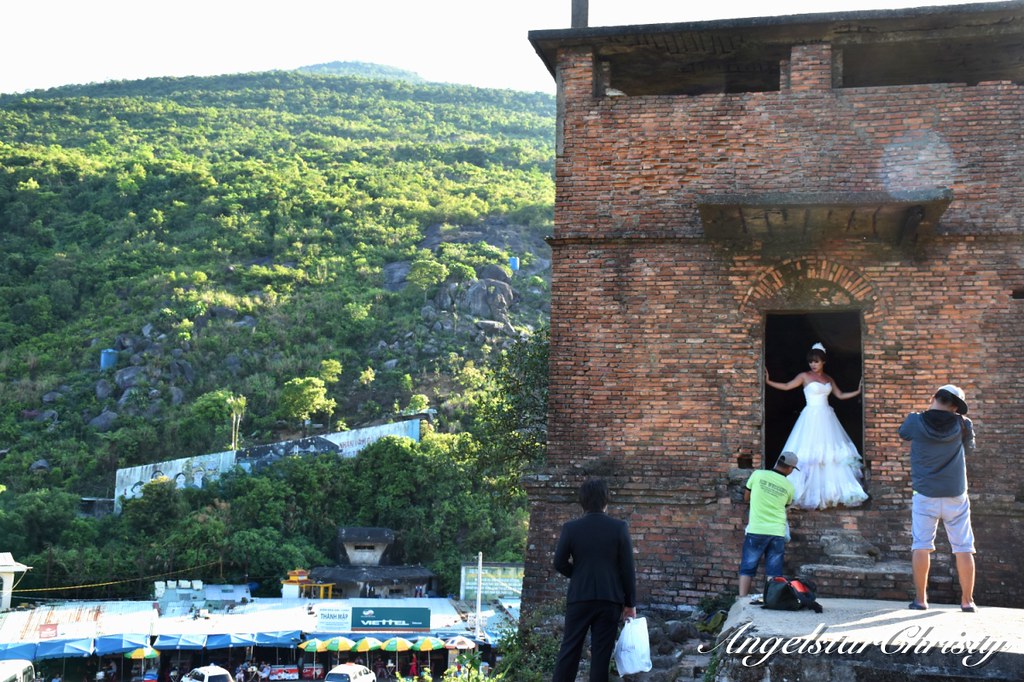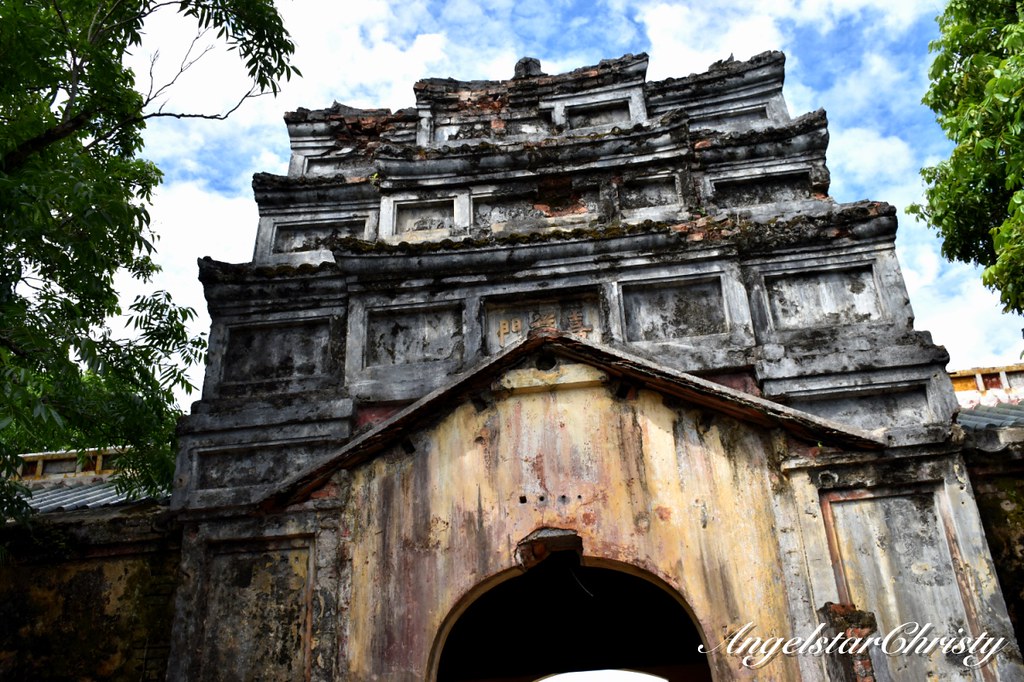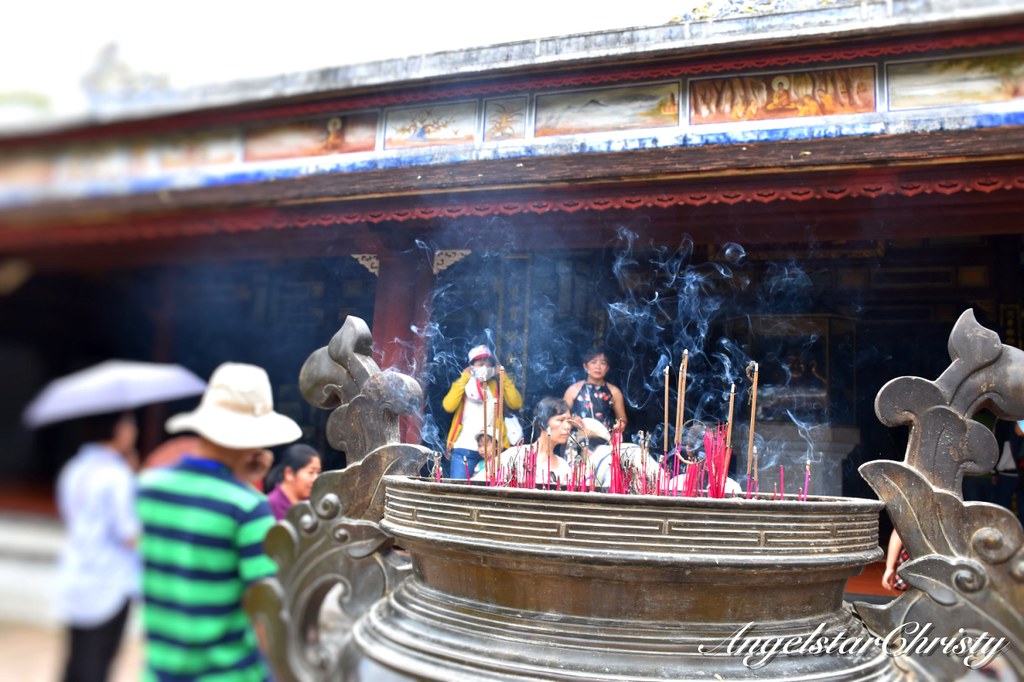
Connecting two cities today, two kingdoms in the past and the main route for goods transportation, this is one of the most important routes in Vietnam, if not one of the most famous.
The locals use this route for purposes of practicality, the tourists, on the other hand, to satisfy their curiosity (and to tick off the bucket list), though they are all in for a treat - the view.
Spanning for 19 km long and at an elevation of 500km above sea level, this is the highest pass in the country.
I would be tempted to say that this is the most famous pass in Vietnam, but it is probably for myself, for this is the only pass I have been to and there is still quite a list of passes, so I will hold my tongue on that fame bit.
Nevertheless, Hai Van pass is still ONE of the most famous, and it gained its fame from the widely-acclaimed automobile show, Top Gear, a production of BBC UK, who called the pass as a "deserted ribbon of perfection" and "one of the best coast roads in the world".
So there, you have the the similar terms, "One of the best".
It is this fame which propelled Hai Van Pass to be congested with tourists, though it already had its share of traffic from the commuters traversing between the cities as it links the major cities of Central Vietnam, namely Danang, Hue and Hoi An.
Now, tourists make their way to this pass, neatly tucked on the unknown and localised spot in the country, either by tours, or on their rented motorcycles (and Vespas) to take in the much talked-about views and get a slice of being on one of the highest and also riskiest passes in Vietnam.
Historically, this was the main, or the only route for the locals to get to either the north or south of Vietnam (Central Vietnam links them both).
There is a little more to the historical context, dating back to the ancient kingdoms of the Champa, of Hindu origins, and the Dai Viet, of Buddhist and mainland Yuan origins (Chinese). The Champa kingdom resided in the south while the Dai Viet are in the north (presumably close to the mainland China borders).
The two kingdoms had been contending with each other over the control of either side, and the geographical locations of the Hai Van Pass served as the link to either the north or the south strategically. However, the pass, with its unique jut out to the East Sea, also served as the wall, the barrier to limit the advances of either kingdom to the other.
(Earlier, before the Chams settled in the south, the Chinese did manage to establish the borders of the Han empire towards the south, an effort achieved by a Chinese general, Ma Yuan, in the 1st century A.D. and it was believed to be at Hai Van where the borders were)
In all its limitations to the ancient kingdoms, Hai Van did serve as a shelter for the Champa kingdom from the strong winds and storms from the north, known as the "Chinese/Northern Winds", and kept them safe from harm. It seemed that Champa did enjoy the favourable bit endowed by the Hai Van Pass as they are located in the south and with the promising weather conditions, it was no surprise the Champa kingdom flourished in no time, with one of its biggest contributors from the agriculture.
Similarly, their glory also attracted the attention from the north which yearned to conquer them and the Champa kingdom was finally defeated by the Le Dynasty in 1471, marking the south as part of the Dai Viet territory.
Following its beginnings with the early civilisation comes the bloody period of the American War which again connects the two fractured cities of Hue and Danang. Heavily damaged by the war and pouting on the only connection, Hai Van Pass took on a rather melancholic presence and was even referred to as the "Street without Joy".
The gloomy and bitter past of Hai Van Pass faded with the newly built Hai Van Tunnel in 2005, which served to ease the traffic and providing an alternative route to the commuters, and due to its rather challenging topology, it is soon known as the "Street without Traffic".
The reputation of Hai Van Pass is not embedded only in the past, for its rather treacherous condition also courted the misfortune of fatal accidents and even one airplane crash.
It is certainly not for the weak-hearted.
Brushing the threats aside, the pass stretches for approximately 21 kilometres long and is a scenic journey for one would be treated to a beautiful view of the sea and an overview of Danang coast at an elevated level.

The height of the pass leads it to be shrouded in misty clouds at certain times of the day/year and the winds can also tend to be really strong, thus earning it aptly named as the "Ocean Cloud Pass" (Deo Hai Van in Vietnamese).
I certainly see the connection of the oceans and the clouds as I stand on the top, taking in the view offered below.
Key attractions along the pass include an ancient gate dating back to the Tran Dynasty, the wartime bunkers from the American War and even a dilapidated fort built by the French, which was then also used during the Vietnam War (by the South Vietnamese and the Americans), and finally, of course, the newer Hai Van Tunnel.


It was truly a great view like no other (every view/scene to me is just as beautifully unique as the other, and they are all just distinct), though as I stood on the top, I could also see the dangers lurking below and that made me shudder as I imagine anyone driving through at night or even in bad weather conditions.
It would not be pleasant, at all.
The scenic view made it not only popular among the tourists eager to get that slice of Vietnam scenery, but even the locals are there for leisure and especially wedding photography, along with road trips for seafood, etc.

History, connection, adventure, scenic view all wraps up Hai Van Pass as not just a route of practicality, but also one of the living, transcending the borders of the past and present, bridging the cities and the people altogether.
I am thankful that I got to visit this place, though it was not initially on my itinerary, but I am definitely glad it is.




*Author's Note:
This is not a sponsored/promotional post, and solely based on author's personal opinions and do not represent the general public.
Experiences vary from one individual to another.
You do not have to agree with me.
You do not have to agree with me.
Art Direction and Photography Styling by Me.
Photos/Videos all belong to me and are copyrighted.
Please kindly ask for permission if you need to use any of my images.
LIKE my Facebook Page
Follow Me on Twitter @Angelstar
Follow my Google+
Stalk me on Instagram @AngelstarChristy
Check out my Pinterest @Angelstarc
Check out my Pinterest @Angelstarc
Subscribe to my YouTube
Follow me on my live updates on my life, happening on SNAPCHAT @angelstarchrist
Follow me on my live updates on my life, happening on SNAPCHAT @angelstarchrist



























